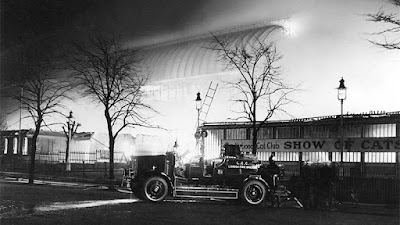Kate Nichols (Ph.D., Birkbeck College London) is Associate Professor of Art History at the University of Birmingham. She has held postdoctoral fellowships at the University of Bristol, the University of York, and the University of Cambridge. She is the author of Greece and Rome at the Crystal Palace: Classical Sculpture and Modern Britain, 1854-1936 (Oxford University Press, 2015).
I spent three years working on a project which explored the crossovers between the Bible and classical antiquity in 19th-century thought, and one of the most striking art works and the one which instantly popped into my head is the sculpture Lot's Wife, by Hamo Thornycroft (1877-78):
It depicts the biblical story from Genesis, where Lot and his family are fleeing Sodom and Gomorrah. Lot's wife looks back at the cities as they flee, and is turned into a pillar of salt. The sculpture shows her part way through this transformation. This biblical story is presented in a very recognizably classical manner. The figure wears a chiton and makes obvious visual references to figures K, L, and M from the East Pediment of the Parthenon (better known as the Elgin Marbles), which had been on display in London since 1816.
You have written about the reception of Greek and Roman art in modern Great Britain. Did you start by being interested in the modern period and then work your way back to the ancient world, or were you interested in antiquity and then discovered how Greek and Roman art was presented in later times?
I did my undergraduate degree in classical studies, but was encouraged throughout my undergraduate degree to explore how people today were able to access the classical past--to think critically about how post-classical people and societies have shaped the classical past. I wrote my undergraduate dissertation on the reception of the Parthenon Marbles in Victorian London, and ever since really have been convinced that the Victorians are absolutely crucial to how we understand Greek and Roman sculpture today--and not always in positive ways!
What work of art was the greatest loss when the Crystal Palace was destroyed by fire in 1936?
All of the objects in the Crystal Palace were plaster casts, rather than antiquities, but that doesn't mean they weren't import art objects in their own right. I personally think that the painted and restored version of the Parthenon Frieze in the Greek Court was a huge loss. It tells us so much about how some mid-Victorians (in particular the architects who built the Crystal Palace courts) conceptualized ancient Greece as a place aligned with artistic practices of painting sculpture in Egypt and the Near East, while others regarded it as isolated from non-European contexts, and to have been always white marble in its forms. It was a really scandalous experiment when it was first exhibited in the 1850s, and I would love to have seen what it looked like.






.jpg)



